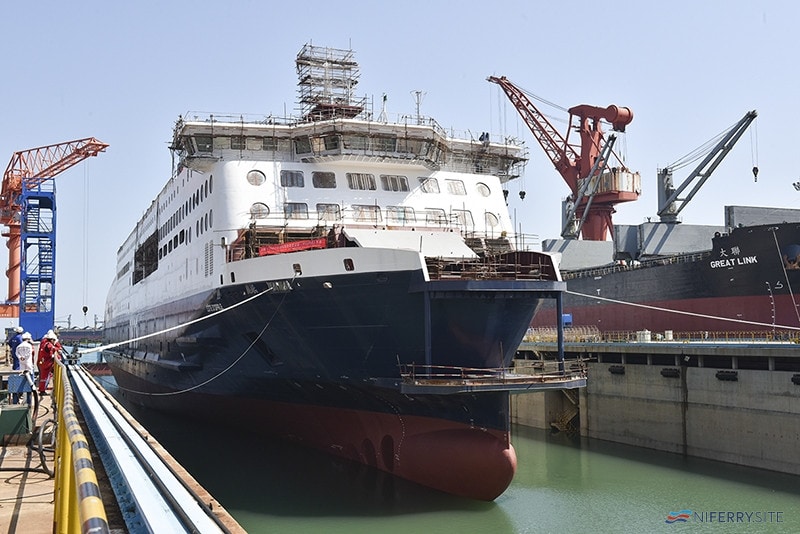The fifth in the series of nine (to date) Stena E-Flexer‘s, CÔTE D’ OPALE, was successfully floated on Wednesday 20/5/20 at China Merchants Jinling Shipyard (Weihai) a month ahead of schedule. The unique vessel is expected to enter service for DFDS between Dover and Calais in summer 2021 with delivery to Stena RoRo contracted for 30 June 2021. On delivery the ship will immediately be bareboat chartered for 10 years to DFDS. Steel cutting for COTE D’OPALE only started less than a year ago on May 30 2019.
Tailored design
The design of CÔTE D’ OPALE has been tailored to the specific demands of the Dover Strait crossing, and so her lines differ slightly from the rest of the series. The short 90-minute crossing means that passenger cabins are not required, and so these have been removed with some additional space given over to public facilities. She also has a different bow and stern configuration tailor designed to fit the linkspans at Dover and Calais.
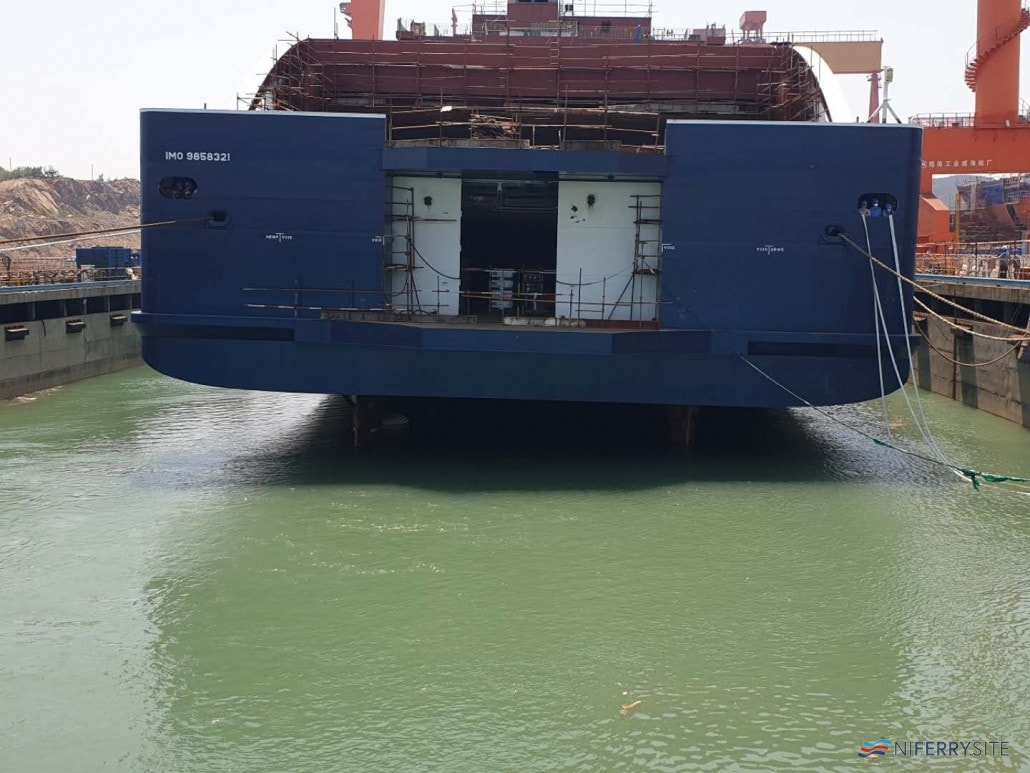
An additional bow thruster unit has been fitted which will help achieve the short turnaround times required on the intensive cross-channel link. According to the shipyard she will carry carry 890 passengers and 110 crew. CÔTE D’ OPALE is now in the fit-out stage. It is also expected that her internal layout will differ from the Stena Line ships. Again, this is as a result of being purpose-built for the Dover – Calais crossing.

Kasper Moos, DFDS VP and Head of BU Short Routes & Passenger, said:
“With her 214 metres length and the capacity for 1000 passengers, Côte d’Opale will be the longest ferry on the Channel.“
“Contrary to the other ferries in the series of eight ordered by Stena, Côte d’Opale has no passenger cabins due to the short crossing time on The Channel. The extra capacity will optimise the customer experience with additional amenities ensuring passengers will have plenty of space to relax, try modern food concepts and enjoy an extensive shopping experience. I am very much looking forward to presenting Côte d’Opale to our customers and see how she will help strengthen and grow our business on the Channel”
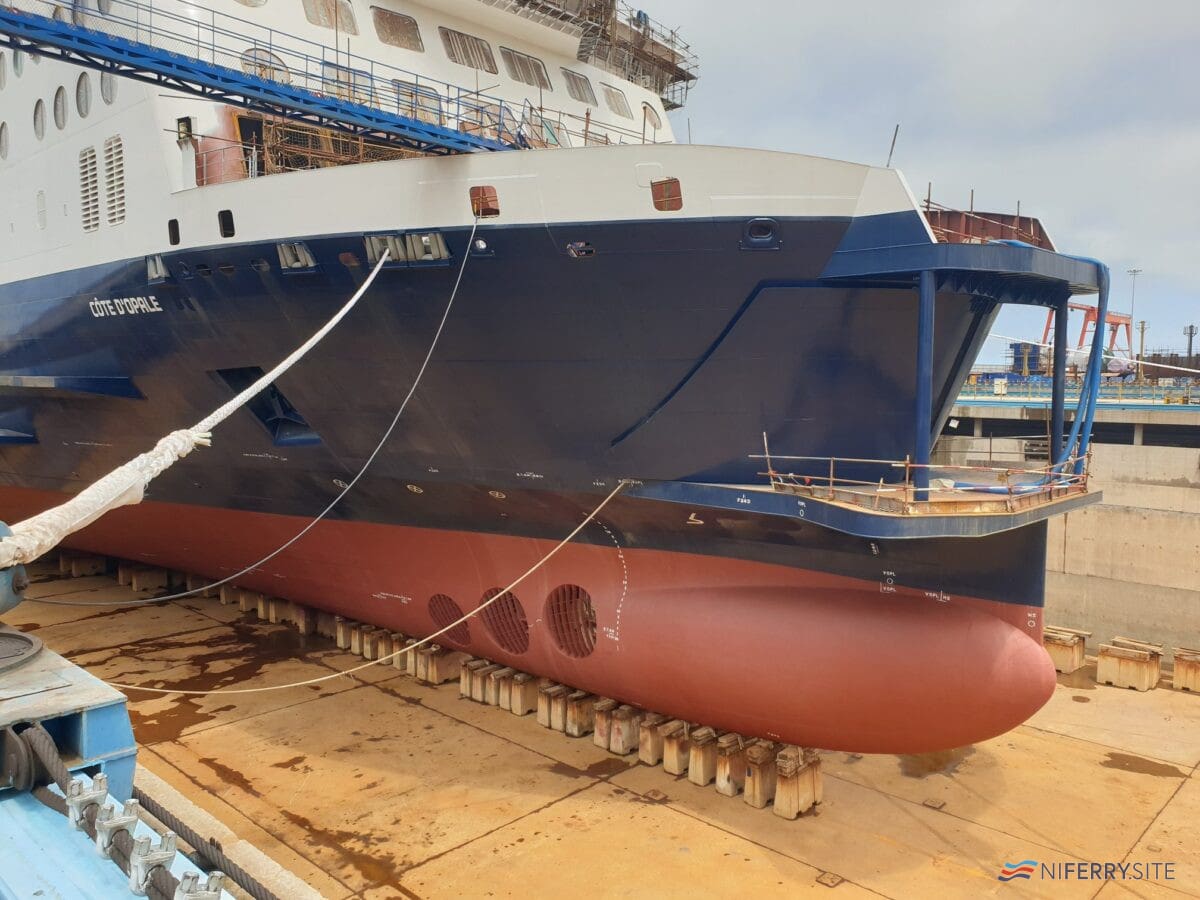
COVID-19 special measures
While China and Shandong Province are ahead of Europe in terms of the development of the COVID-19 pandemic, special measures such as the wearing of face masks are in force at the yard in Weihai now that the strict quarantine measures put in place by central government have been lifted. The work programme has been reorganised with workers being allocated into small teams and shifts broken up in order to reduce the risk of cross-infection. As travel restrictions are still in place in China the yard has had to work with the government in order to return workers to the yard from the provinces. Video links have been used with foreign suppliers who have been unable to send their own workers to the yard to assist as normal. Despite the shutdown of production earlier in the year the shipyard appears to be on target to meet or beat its contracted delivery dates.
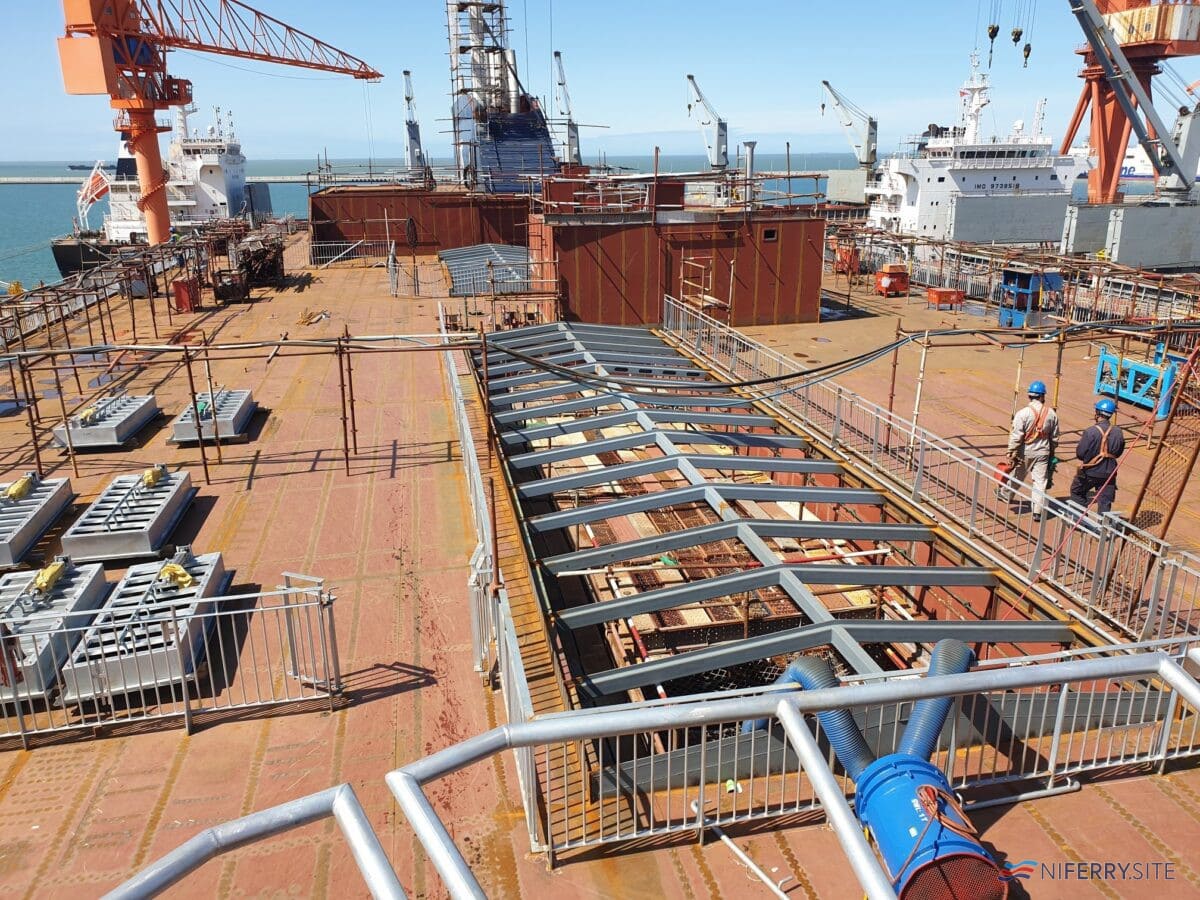
Keel laid for first dual-fuel E-Flexer
On April 23 the keel was laid for yard number W0269, Brittany Ferries SALAMANCA. This is the first of two dual-fuel E-Flexers being built for Brittany Ferries services linking Great Britain and Spain. SALAMANCA will be the first E-Flexer to be powered by LNG and the first ferry built by the shipyard to use the fuel. The company’s sister-yards have extensive experience with building ships which use LNG, however. Like part-sister GALACIA (currently in fit-out and the next E-Flexer scheduled to be delivered), SALAMANCA has been fitted with additional passenger cabins over the standard Stena Line design. As with DFDS, Brittany Ferries have also specified their own passenger facility layout for their ships.
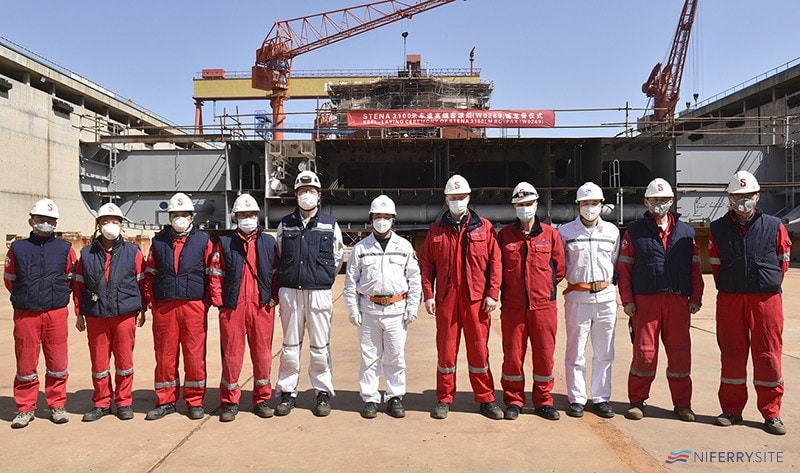
Steel cutting for W0270, the first of two lengthened E-Flexer’s for Stena Line, started on April 2nd. When complete these 239.7m long vessels will have capacity for 3,600lm of freight and 1,200 passengers. Stena Line have yet to confirm which route they will be deployed on, however. W0270 is contracted to be delivered in May 2022. A second example, W0271, is to follow later the same year. The final E-Flexer currently on order, Brittany Ferries SANTOÑA, is scheduled to be delivered during 2023.
